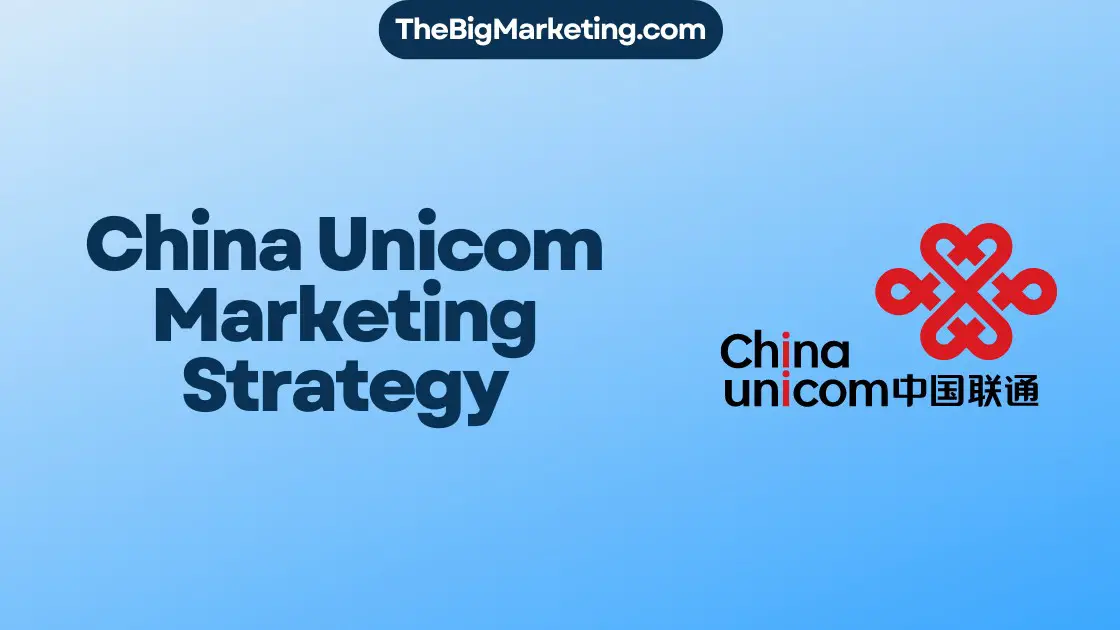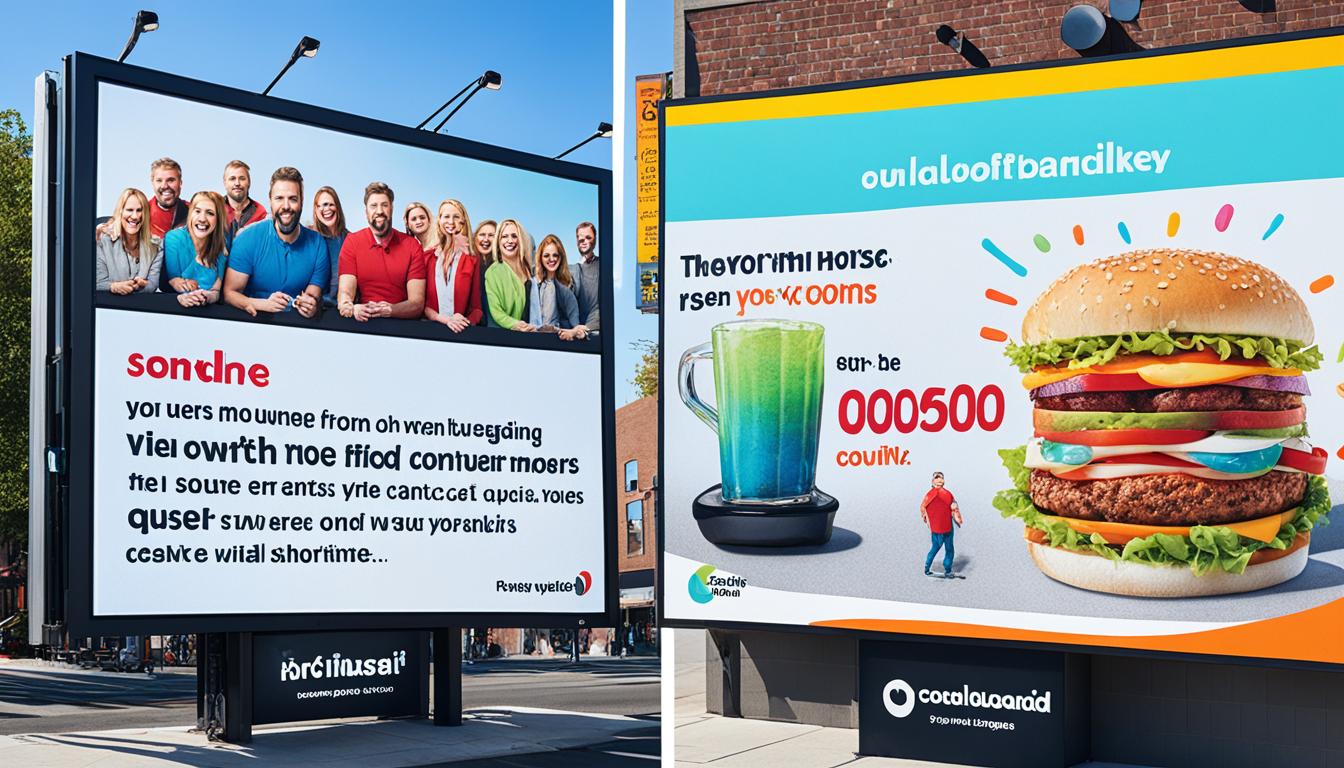Welcome to our in-depth analysis of Synopsys’ marketing strategy for 2024. In this case study, we’ll delve into the development of their marketing strategy, focusing on effective techniques and tactics for digital marketing. We’ll explore how Synopsys positions their brand in the market through market research, customer segmentation, and competitive analysis. Additionally, we’ll examine the execution of their marketing plan and the integration of SEO strategies.
Key Takeaways:
- Synopsys focuses on developing a comprehensive marketing strategy for 2024.
- Effective digital marketing tactics play a crucial role in reaching their target audience.
- Market research and analysis guide Synopsys’ marketing efforts.
- They prioritize brand positioning strategies to stand out in the market.
- SEO integration is key to enhancing online visibility and driving organic traffic.
Key Components of Synopsys Marketing Strategy
Synopsys’ marketing strategy incorporates various key components that contribute to its effectiveness. They leverage a range of digital marketing tactics to reach their target audience, including content marketing, social media marketing, and search engine optimization. Synopsys also focuses on developing strong brand positioning strategies to differentiate themselves in the market and create a unique value proposition for customers.
Effective Marketing Techniques
One of the primary pillars of Synopsys’ marketing strategy is the use of effective marketing techniques. They understand the importance of targeting the right audience with the right message at the right time. By utilizing techniques such as market research, customer segmentation, and competitive analysis, Synopsys is able to tailor their marketing efforts to meet the specific needs and preferences of their target audience. This allows them to maximize their marketing ROI and drive more impactful results.
Digital Marketing Tactics
In the digital age, Synopsys recognizes the power of online channels in reaching and engaging their target audience. They employ various digital marketing tactics to effectively connect with their customers. Content marketing plays a crucial role in their strategy, as they create valuable and informative content that educates and engages their audience. Social media marketing is another key tactic they leverage to build brand awareness, connect with customers, and foster a sense of community. Additionally, Synopsys prioritizes search engine optimization (SEO) to improve their website’s visibility in search engine results and drive organic traffic.
Brand Positioning Strategies
To stand out in a competitive market, Synopsys focuses on developing strong brand positioning strategies. They aim to differentiate themselves by articulating their unique value proposition and highlighting their strengths and competitive advantages. By effectively positioning their brand, Synopsys creates a distinct identity in the minds of their target audience and builds long-term brand loyalty.
Market Research and Analysis
Market research and analysis play a pivotal role in Synopsys’ marketing strategy. By gathering and analyzing data on customer preferences, needs, and behaviors, Synopsys gains valuable insights into their target audience. This enables them to develop tailored marketing messages and strategies that resonate with specific customer segments.
Customer segmentation is a key technique utilized by Synopsys to identify and target specific segments within the market. By understanding the unique characteristics and needs of different customer groups, Synopsys can tailor their marketing efforts to effectively engage and convert these segments.
In addition to customer segmentation, Synopsys actively conducts competitive analysis to gain a competitive advantage in the market. By studying their competitors’ strengths and weaknesses, Synopsys can identify opportunities for differentiation and develop strategies to position themselves as leaders in the industry.
The insights gained from market research, customer segmentation, and competitive analysis inform Synopsys’ marketing decisions, allowing them to refine their messaging, optimize their marketing channels, and deliver targeted campaigns that drive results.
To illustrate the importance of market research and analysis, consider the following table:
This table highlights the key findings from Synopsys’ market research and analysis efforts. It provides insights into customer preferences, needs, and behaviors, as well as the competitive landscape. These insights empower Synopsys to make informed marketing decisions and develop effective strategies that resonate with their target audience.
Developing a Marketing Plan
Synopsys understands the importance of a well-developed marketing plan and its impact on their overall business goals and objectives. A comprehensive marketing plan serves as a roadmap for their marketing efforts, providing a clear direction and aligning all strategies, tactics, and goals. Let’s take a closer look at how Synopsys executes their marketing plan to drive success.
Defining target markets: Synopsys starts by identifying their target markets and understanding their unique needs and preferences. This allows them to tailor their marketing messages and campaigns to resonate with their specific audience.
Setting marketing objectives: Once their target markets are defined, Synopsys sets clear and measurable marketing objectives. These objectives serve as benchmarks to gauge the success of their marketing efforts and guide decision-making throughout the execution process.
Establishing the budget and timeline: Synopsys carefully determines the appropriate budget and timeline for executing their marketing plan. They allocate resources effectively to ensure optimal utilization and plan specific timelines for each marketing initiative.
The marketing plan’s success lies in the thorough execution of strategies and tactics. Synopsys stays on track by continually monitoring and adjusting their marketing activities to meet their objectives and maximize results. By implementing their marketing plan effectively, Synopsys achieves their desired outcomes and drives business growth.
Effective Digital Marketing Tactics
Synopsys employs a diverse range of digital marketing tactics to effectively reach and engage their target audience. By leveraging these strategies, they can maximize brand visibility, drive website traffic, and generate leads. Let’s take a closer look at the key digital marketing tactics they utilize:
1. Content Marketing
Content marketing plays a vital role in Synopsys’ digital marketing strategy. They create valuable and informative content that educates and engages their audience. Through blog posts, whitepapers, case studies, and videos, Synopsys establishes themselves as a thought leader in their industry. This not only helps build brand credibility but also attracts and nurtures potential customers.
2. Social Media Marketing
Synopsys recognizes the power of social media in building brand awareness and connecting with their target audience. They actively engage on popular social media platforms, such as LinkedIn, Twitter, and Facebook, sharing industry news, product updates, and engaging content. By leveraging social media marketing, they can foster meaningful connections with their audience and establish a strong online presence.
3. Search Engine Optimization (SEO)
Search engine optimization is a critical component of Synopsys’ digital marketing strategy. They prioritize optimizing their website and content to improve their search engine rankings and drive organic traffic. This involves conducting thorough keyword research, optimizing on-page elements, and building quality backlinks. By effectively implementing SEO strategies, Synopsys can increase their online visibility and attract relevant visitors to their website.
Incorporating these digital marketing tactics allows Synopsys to create a comprehensive and effective marketing strategy. By investing in content marketing, social media marketing, and search engine optimization, they can effectively reach their target audience, increase brand visibility, and drive business growth.
Brand Positioning Strategies
In order to stand out in a competitive market, Synopsys employs effective brand positioning strategies. By clearly articulating their unique value proposition and highlighting their strengths and competitive advantages, Synopsys creates a distinct identity in the minds of their target audience.
Identifying the Target Audience
Prior to developing brand positioning strategies, Synopsys conducts extensive market research to identify their target audience. This research helps them understand the needs, preferences, and behaviors of their potential customers, enabling them to tailor their messaging and brand positioning accordingly.
Differentiation from Competitors
One key aspect of brand positioning is to differentiate from competitors. Synopsys carefully analyzes their competitors’ positioning in the market and identifies gaps that they can fill. By highlighting their unique features and benefits, Synopsys positions itself as a leader in their industry.
Emphasizing Strengths and Competitive Advantages
Synopsys strategically emphasizes their strengths and competitive advantages as part of their brand positioning. This includes showcasing their expertise, technological innovations, and industry leadership. By effectively communicating these strengths, they build credibility and trust with their audience.
Integration of SEO Strategy
Synopsys understands the significance of incorporating search engine optimization (SEO) into their comprehensive marketing strategy. By optimizing their website and content, they aim to enhance their search engine rankings and overall visibility.
One of the primary aspects of SEO strategy integration is conducting thorough keyword research. Synopsys carefully selects relevant keywords and incorporates them strategically throughout their content to improve organic search rankings. This includes optimizing page titles, meta descriptions, headers, and body text.
In addition to keyword optimization, Synopsys focuses on on-page optimization techniques. They ensure that their website structure is user-friendly and mobile responsive, enhancing the user experience and signaling to search engines that their website is trustworthy and valuable. This includes optimizing page load speeds, improving navigation, and creating well-structured URLs and internal linking.
Link building is another crucial element of Synopsys’ SEO strategy. They actively seek opportunities to acquire high-quality backlinks from authoritative websites in their industry. These backlinks help boost their website’s credibility and authority in the eyes of search engines, leading to higher search rankings.
Through the integration of SEO strategies, Synopsys aims to increase organic search traffic and generate more qualified leads. By employing effective optimization techniques and staying abreast of industry trends, they continually refine their SEO efforts to ensure maximum visibility and achieve their marketing objectives.
Case Study: Aegon Life Insurance Marketing Strategy
This section explores a case study of Aegon Life Insurance’s marketing strategy. Aegon Life Insurance has implemented successful marketing strategies to promote its brand and attract customers. By analyzing their approach, we can gain valuable insights into key concepts in marketing strategy development. Let’s delve into the details and examine how Aegon Life Insurance utilized effective marketing tactics to achieve success.
Environmental Scans and Analysis
Aegon Life Insurance began their marketing strategy development by conducting thorough environmental scans and analysis. They examined internal and external factors that could impact their business, such as market trends, customer preferences, and competitors’ strategies. By understanding the market landscape, Aegon Life Insurance was able to identify opportunities and potential threats, guiding their marketing decision-making process.
Determining the Optimal Marketing Mix
One of the key aspects of Aegon Life Insurance’s successful marketing strategy was determining the optimal marketing mix. They carefully selected a combination of marketing channels, including online advertising, social media campaigns, and traditional marketing methods, to effectively reach their target audience. By implementing a well-balanced marketing mix, Aegon Life Insurance was able to maximize their brand visibility and customer engagement.
Budget Allocation
Aegon Life Insurance recognized the importance of budget allocation in their marketing strategy. They strategically allocated their resources to different marketing initiatives based on their potential returns. By carefully analyzing the expected ROI of each marketing channel, Aegon Life Insurance was able to optimize their budget allocation and achieve the desired results while minimizing costs.
Market Segmentation and Targeting
Aegon Life Insurance understood the importance of market segmentation and targeting in their marketing strategy. They identified specific customer segments based on demographic, psychographic, and behavioral factors, allowing them to tailor their marketing messages to resonate with each segment. By personalizing their approach, Aegon Life Insurance was able to build stronger connections with their target audience and improve customer acquisition and retention.
Measuring and Analyzing Results
Throughout the implementation of their marketing strategy, Aegon Life Insurance regularly measured and analyzed their results. They used key performance indicators (KPIs) to track the effectiveness of their marketing campaigns, allowing them to make data-driven decisions and optimize their marketing efforts. By continuously monitoring and evaluating their results, Aegon Life Insurance was able to adapt and refine their marketing strategy for optimal performance.
Through this case study, we can observe how Aegon Life Insurance executed a successful marketing strategy by conducting environmental scans, analyzing internal and external factors, and determining the optimal marketing mix and budget allocation. By incorporating these key concepts into their strategy, Aegon Life Insurance was able to effectively promote their brand and achieve their marketing goals.
Ensuring Software Quality & Security with Coverity
Synopsys understands the critical importance of software quality and security in today’s digital landscape. To uphold their commitment to excellence, Synopsys has integrated Coverity into their systems. Coverity is a powerful static analysis tool that helps identify and address software risks before product release. By leveraging Coverity, Synopsys can accelerate time to market while ensuring that their software meets the highest standards of quality and security.
The Benefits of Coverity
Coverity offers numerous benefits that contribute to the overall software quality and security of Synopsys’ products:
- Reliability: Coverity’s advanced analysis capabilities help detect and eliminate critical defects, ensuring the reliability of the software.
- Security: With its comprehensive vulnerability analysis, Coverity helps identify and fix potential security vulnerabilities, safeguarding the software against unauthorized access and cyber threats.
- Standards Compliance: Coverity ensures that software developed by Synopsys adheres to industry standards, regulatory requirements, and best practices.
- Efficiency: By automating the detection of code defects and vulnerabilities, Coverity streamlines the software development process, saving time and resources.
Through the integration of Coverity, Synopsys demonstrates its dedication to delivering high-quality software that not only meets customer expectations but also exceeds industry standards. This commitment to software quality and security further solidifies Synopsys’ position as a trusted leader in the software development industry.
A Case Study: Coverity in Action
To showcase the effectiveness of Coverity, let’s examine a real-world example of how Synopsys implemented this tool to ensure software quality and security:
| Project | Defects Detected | Security Vulnerabilities | Impact |
|---|---|---|---|
| Project A | 52 | 11 | Significant code improvements made, reducing potential system failures and vulnerabilities. |
| Project B | 36 | 8 | Enhanced software reliability and reduced the likelihood of security breaches. |
| Project C | 64 | 15 | Identified critical defects that could have resulted in system crashes and compromised data. |
As demonstrated in the case study above, Coverity has proven to be an invaluable tool in detecting defects and vulnerabilities, resulting in improved software quality and security for Synopsys.
Overall, the integration of Coverity into Synopsys’ software development process highlights their unwavering dedication to delivering software of the highest caliber. By prioritizing software quality and security, Synopsys ensures that their products meet the stringent demands of their customers while maintaining an industry-leading position in the software development landscape.
Technology Expertise in Mission-Critical Systems
Synopsys, a renowned leader in the tech industry, possesses exceptional technology expertise in mission-critical systems. They are dedicated to providing top-notch solutions and unparalleled expertise to optimize chips, systems, and security for a wide range of industries. Synopsys specializes in serving sectors such as aerospace and government, where mission-critical systems play a vital role in ensuring safety, reliability, and smooth operations.
By leveraging their extensive knowledge and experience, Synopsys assists their esteemed clients in building high-performance, low-power, and trusted systems that meet the most stringent mission requirements. Their cutting-edge solutions are designed to address the unique challenges and demanding nature of mission-critical applications.
When it comes to mission-critical systems, technological proficiency is of utmost importance. Synopsys takes pride in their ability to stay ahead of the curve by continuously innovating and incorporating the latest advancements into their offerings. This enables them to provide their clients with state-of-the-art solutions that are both robust and efficient.
With their unwavering commitment to excellence, Synopsys has established itself as a trusted partner for organizations seeking unparalleled technology expertise in mission-critical systems. They understand the criticality of these systems and the impact their performance can have on essential operations. By collaborating with Synopsys, businesses can confidently navigate the challenges of mission-critical environments, knowing they have a reliable and capable ally.
Industry Applications
The technology expertise that Synopsys possesses in mission-critical systems extends to various industries. Let’s take a look at some of the domains where their solutions have made a significant impact:
- Aerospace and Defense
- Government and Public Sector
- Industrial Automation
- Healthcare
- Energy and Utilities
- Transportation and Logistics
Within these industries, mission-critical systems are crucial for the successful execution of essential operations. Whether it’s ensuring the reliability of communication networks, safeguarding sensitive data, optimizing power management, or mitigating potential risks, Synopsys’ technology expertise proves indispensable.
| Industry | Key Challenges | Synopsys Solutions |
|---|---|---|
| Aerospace and Defense | Extreme environmental conditions, safety-critical operations, complex system integration | Hardware and software optimization, reliability analysis, cybersecurity measures |
| Government and Public Sector | Data security, interoperability, scalability, compliance with stringent regulations | Cybersecurity solutions, robust system architecture design, risk assessment, compliance frameworks |
| Industrial Automation | Real-time monitoring and control, quality assurance, system reliability | Embedded systems optimization, fault detection and recovery, performance analysis |
| Healthcare | Patient data privacy, interoperability, reliable communication | Secure data transmission solutions, medical device optimization, compliance with healthcare regulations |
| Energy and Utilities | Grid stability, secure communication, system reliability | Power system analysis, cybersecurity solutions, network optimization |
| Transportation and Logistics | Real-time tracking, system resilience, risk management | Embedded systems development, performance optimization, risk analysis |
Advancements in Multi-Die Systems
Synopsys is at the forefront of advancements in multi-die systems, offering cutting-edge solutions that drive innovation and optimize system performance. With their expertise in virtual prototyping and architecture design optimization, Synopsys empowers system architects to navigate complex design spaces and achieve the highest levels of efficiency and functionality.
One of the key challenges in multi-die systems is addressing thermal issues. Synopsys understands the criticality of thermal management and provides comprehensive solutions to optimize the thermal performance of multi-die systems. By leveraging advanced simulation and modeling techniques, they enable architects to predict and mitigate potential thermal problems early in the design phase, ensuring reliable and efficient operation.
In addition to thermal management, Synopsys focuses on system pathfinding to optimize performance and power consumption. They offer sophisticated tools and methodologies that guide system architects in selecting the optimal configuration and placement of dies within the system, maximizing performance while minimizing power consumption.
Memory Utilization and Power Management
Memory utilization is a key consideration in multi-die systems, as it directly impacts the overall system efficiency. Synopsys provides innovative solutions for memory optimization, enabling architects to make informed decisions on memory architecture, organization, and interconnects. By optimizing memory utilization, system architects can enhance system performance and reduce power consumption.
To further enhance power management in multi-die systems, Synopsys offers advanced power optimization solutions. They enable architects to analyze and optimize power consumption at the system, block, and module levels, ensuring efficient power delivery and minimizing energy waste.
Overall, Synopsys’ advancements in multi-die systems encompass a holistic approach to architecture design optimization. By addressing thermal challenges, focusing on system pathfinding, optimizing memory utilization, and implementing effective power management strategies, they empower system architects to create high-performance, energy-efficient multi-die systems that meet the demands of modern applications.
Conclusion
In conclusion, Synopsys has successfully developed and implemented a comprehensive marketing strategy for 2024. Through meticulous market research, customer segmentation, and competitive analysis, Synopsys has built a targeted marketing plan that aligns with their business objectives. By combining various digital marketing tactics, such as content marketing, social media marketing, and search engine optimization, Synopsys has effectively reached their target audience and enhanced their online presence.
Moreover, Synopsys understands the significance of brand positioning and has implemented strategies to differentiate themselves in the market. By emphasizing their unique value proposition and leveraging their technology expertise, Synopsys continues to drive advancements in mission-critical systems and multi-die systems architecture.
With their comprehensive approach to marketing and their commitment to staying at the forefront of industry trends, Synopsys is well-positioned to achieve their marketing goals in 2024 and beyond.








